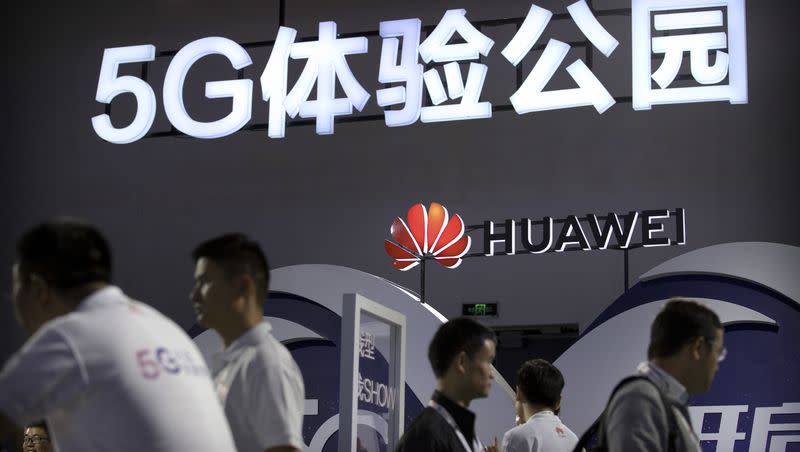Who has benefited most from a long-running research pact between China and the U.S.? The answer may surprise you

Theft of U.S. intellectual property by China-backed state actors is a political and economic strategy that’s been in play for years. It’s a strategy Chinese government leaders have as much as admitted.
But alongside the practice of pirating innovations developed in the U.S., which the Chinese government has characterized as a matter of national security policy, is a long-running international pact that’s brought researchers from China and the U.S. together in collaborative projects that have yielded wide-ranging benefits for both countries.
Now, amid rising tensions between the world’s premier economic and military superpowers, a group of U.S. lawmakers is calling for an end to the U.S.-China Science and Technology Agreement, which was first struck in the late ’70s and has since been regularly renewed.
Congressman Mike Gallagher, R-Wisc., chairman of the House Select Committee on the Chinese Communist Party, is leading an effort backed by a group of GOP lawmakers to let the agreement, coming due for a renewal later this month, to lapse.
A June letter to Secretary of State Antony Blinken, signed by Gallagher and nine other Republican House members, calls for bringing an end to the research agreement, citing reports that suggest research partnerships organized under the pact “could have developed technologies that would later be used against the United States.”
“The evidence available suggests that the (People’s Republic of China) will continue to look for opportunities to exploit partnerships organized under the (Science and Technology Agreement) to advance its military objectives to the greatest extent possible and, in some cases, to attempt to undermine American sovereignty,” the letter to Blinken reads. “The United States must stop fueling its own destruction. Letting the STA expire is a good first step.”
Related
However, a new report from The Wall Street Journal that included analysis of data assembled by Clarivate, a London-based data firm that tracks global scientific research, shows the U.S. may be the biggest loser if the collaborative research program is suspended.
Analysis of the data, performed by Caroline Wagner, a professor of public policy at Ohio State University, notes that scientific research is, by nature, a process of international cooperation and that 40% of America’s scientific research is the product of work produced with colleagues outside of the country. And, China and the U.S. are each other’s No. 1 collaborators on science research.
Wagner’s analysis also unveiled that the U.S. depends more heavily on China than China does on the U.S. in some strategic areas of shared research efforts.
Between 2017 and 2021, U.S.-China collaborations accounted for 27% of U.S.-based scientists’ high-quality research in nanoscience, for example, but only 13% of China-based scientists’ according to The Wall Street Journal report. And, the gap in telecommunications research was even more pronounced, with collaborations accounting for 10% of China’s output but more than 33% of the U.S.’s.
“It feels like U.S. policy makers — people in highest executive branches — have a backward understanding of who benefits from Chinese collaboration,” Deborah Seligsohn, an assistant professor of political science at Villanova University and a former environment, science, technology and health counselor at the U.S. Embassy in Beijing, told The Wall Street Journal.
Wagner notes in her assessment that the data also reflects China’s growing might when it comes to domestic scientific research performed outside the international collaborative space.
In 2019, according to Wagner’s analysis, its researchers for the first time surpassed their U.S. counterparts in the share of the 1% most-cited papers, often known as the Nobel Prize tier, per the Journal. The following year, China-based scholars also passed the Americans in the share of the 10% most-cited papers, Wagner said.
China has become the primary engine of global economic growth, according to a recent study from the Harvard Kennedy School’s Belfer Center for Science and International Affairs. It supplanted the U.S. in 2020 as the home to the biggest share of Fortune 500 companies and is on the verge of toppling the U.S. from its position as the premier world economic power, a position its held since the late 1800s.
When measured by the traditional yardstick — market exchange rate — since 2000, China’s gross domestic product has soared from $1.2 trillion to $17.7 trillion. On the current trajectory, it will overtake the U.S. within a decade. By the yardstick both the CIA and the IMF judge to be the best metric for comparing national economies — purchasing power parity — China has already surpassed the U.S. to become the world’s largest economy.
At a Utah Valley University-hosted summit on China relations last year, former Utah Gov. and former U.S ambassador to Singapore, China and Russia Jon Huntsman Jr. was unabashed in his call for a change in thinking and approach when it comes to China, which continues to flex its economic and political muscle in ways that have rarely been, simultaneously, so externally aggressive and internally oppressive.
Huntsman also called for a revision and renewal of the U.S. approach to competing with China and said he believed Utah could be among the places from which thought leaders could push forward with needed changes.
“We need a new locale for new thinking,” Huntsman told the sold-out audience at UVU’s Noorda Center as well as hundreds of online attendees for the 2022 event. “We need a new generation of people who are going to take a look at our most ascendent challenge of the century, which is China.
“This is the New West. This is where new thinking is occurring. This is where entrepreneurship abounds ... where new technologies are being advanced, developed and commercialized. Where people really care about the global environment. They want to make sense of it. Not the old think thanks, not the old conventional wisdom thinking, which we’re sick and tired of. We need something new.”

